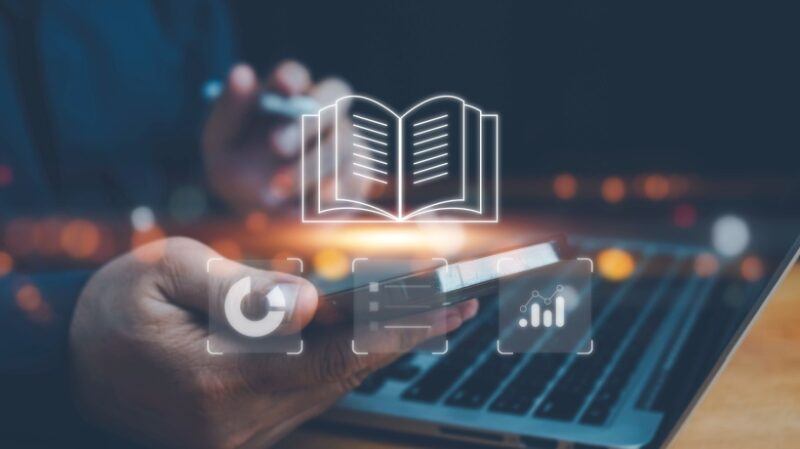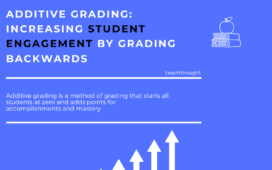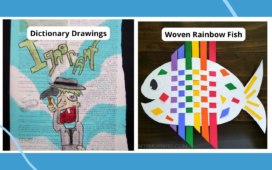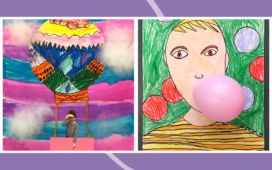
Digital Media In Modern Teaching Practices
In today’s fast-paced, tech-driven world, education is undergoing a remarkable transformation. The days of traditional chalkboard lectures are giving way to a new era where digital media plays a pivotal role in shaping how teachers teach and how students learn. With the rise of interactive tools, video lessons, online collaborative platforms, and virtual simulations, educators now have a wealth of resources to make lessons more engaging and meaningful for students. But what exactly is the impact of digital media in modern teaching, and how can teachers harness its full potential to revolutionize their classrooms?
This article will explore how digital media is changing the landscape of modern teaching practices, examine the benefits of these innovations, and discuss the challenges that need to be addressed to ensure its successful integration. Whether you’re a teacher looking for ways to make your lessons more interactive, a parent curious about how technology is affecting your child’s education, or simply someone interested in the future of learning, this article is for you.
The Digital Shift: How Education Is Embracing Technology
Over the past decade, technology has permeated nearly every aspect of our lives, and education is no exception. Digital media encompasses a wide range of tools, including video lectures, educational apps, interactive simulations, and platforms like Google Classroom and Microsoft Teams. These tools have fundamentally changed how educators approach teaching and how students engage with learning materials.
Gone are the days when students were limited to textbooks and handwritten notes. Now, they have access to an endless library of information, videos, podcasts, and online forums at their fingertips. In classrooms around the world, teachers are leveraging digital media to create dynamic, engaging, and interactive learning environments. Whether it’s through virtual field trips or real-time collaboration with peers across the globe, students are exposed to new ways of learning that were unimaginable a few years ago.
The rise of digital media in education is not just about convenience; it represents a shift in pedagogy. Teachers are moving away from traditional, teacher-centered models of instruction towards more student-centered, interactive approaches. By using digital tools, teachers can create personalized learning experiences that cater to the unique needs and learning styles of each student.
Boosting Student Engagement With Digital Media In Modern Teaching
One of the biggest benefits of digital media in education is its ability to boost student engagement. Let’s face it, keeping students engaged in the classroom has always been a challenge. With the distractions of smartphones, social media, and constant notifications, capturing and holding student’ attention is harder than ever. But digital media offers a solution by making learning more interactive, fun, and immersive.
Take video lectures, for example. Instead of listening to a monotonous lecture, students can watch engaging videos that bring concepts to life. Whether it’s a documentary on ancient civilizations, a TED Talk on climate change, or an animated explanation of complex scientific theories, videos can make learning more accessible and enjoyable. The flexibility of video content also allows students to pause, rewind, and rewatch sections, ensuring they grasp the material at their own pace.
Another powerful tool is interactive simulations. These allow students to experiment and learn by doing, without the fear of making mistakes. For example, a science teacher can use a digital simulation to let students virtually dissect a frog or explore the solar system. These simulations provide hands-on learning experiences that help students understand difficult concepts in a more practical and engaging way.
Educational games are also proving to be effective in boosting engagement. Games that incorporate rewards, challenges, and competitive elements can motivate students to participate actively in the learning process. The gamification of education where students earn points, badges, or rewards for completing tasks can make learning feel less like a chore and more like a game.
Personalized Learning For Every Student
One of the greatest advantages of digital media in education is its ability to cater to individual learning styles. Every student learns differently: some are visual learners, others are auditory, and some thrive with hands-on activities. In a traditional classroom setting, it’s often difficult for teachers to accommodate these diverse learning preferences. But with digital tools, teachers can offer personalized learning experiences tailored to each student’s needs.
For instance, a student who struggles to understand a concept in a textbook may benefit from watching a video explanation. Another student who excels in math but struggles with writing may use an app that offers targeted practice exercises to strengthen their writing skills. With digital media, learning becomes more flexible and adaptable, giving students more control over how they learn.
Moreover, digital tools can track students’ progress and provide real-time feedback. This is particularly useful for both students and teachers. Students can quickly identify areas where they need to improve, while teachers can use this data to adjust their teaching strategies. This kind of immediate, personalized feedback is invaluable in helping students stay on track and succeed.
Collaboration And Communication In The Digital Age
Collaboration is an essential skill for success in the twenty-first century, and digital media makes it easier than ever for students to work together, even if they’re miles apart. Collaborative online platforms like Google Classroom, Microsoft Teams, and Slack allow students to work on group projects, share ideas, and communicate in real time, fostering a sense of teamwork and community.
These tools are especially beneficial in preparing students for the modern workplace, where remote work and virtual collaboration are becoming increasingly common. By using these platforms, students not only learn how to work together but also develop digital communication skills that will serve them well in their future careers.
In addition to fostering collaboration, digital media also enhances communication between teachers and students. Teachers can use tools like email, messaging apps, and video calls to provide extra support, answer questions, and offer feedback outside of class hours. This constant line of communication helps students stay connected and engaged, even when they’re not in the classroom.
Challenges In Using Digital Media In Modern Teaching
While the benefits of digital media in education are undeniable, it’s important to acknowledge the challenges that come with its integration. One of the most significant hurdles is the digital divide—the gap between those who have access to technology and those who don’t. In many parts of the world, particularly in low-income communities, students lack access to computers, tablets, and reliable internet connections. This inequality can create significant barriers to learning, exacerbating educational disparities.
Moreover, digital literacy is another key concern. Both teachers and students need to have the skills and knowledge to effectively use digital tools. Unfortunately, not all educators are well-versed in the latest technologies, and not all students are familiar with how to navigate digital platforms. Without proper training and support, the potential of digital media in education may not be fully realized.
Another challenge is the potential for overreliance on technology. While digital media offers exciting possibilities, it’s important not to forget the value of face-to-face interactions and traditional teaching methods. Technology should complement, not replace, the role of the teacher. Striking a balance between digital and traditional methods is crucial to creating a well-rounded educational experience.
Overcoming Challenges: Ensuring Equal Access And Digital Literacy
To fully harness the potential of digital media in education, it’s essential to address these challenges head-on. Bridging the digital divide requires investments in infrastructure, ensuring that every student has access to the tools they need to succeed. Governments, schools, and nonprofits can work together to provide affordable devices, expand internet access, and offer technology grants to underserved communities.
When it comes to digital literacy, professional development programs for teachers are key. Educators need ongoing training to stay up-to-date with the latest digital tools and learn how to integrate them effectively into their teaching practices. Schools can also offer workshops for students to help them develop the necessary skills to navigate digital platforms confidently.
The Future Of Education: What Lies Ahead?
The role of digital media in education is only going to grow in the coming years. As technology continues to evolve, we can expect to see even more innovative tools and platforms that will further revolutionize the way we teach and learn. From Virtual Reality experiences that transport students to historical events to AI-powered tutoring systems that provide personalized instruction, the possibilities are endless.
Ultimately, the goal is to create an education system that is more accessible, engaging, and effective for all students. By embracing digital media and addressing the challenges that come with it, we can prepare the next generation of learners for the demands of the twenty-first-century world.
Conclusion: Embracing The Digital Revolution In Education
Digital media is no longer a novelty in education; it’s a necessity. The integration of digital tools into the classroom is transforming how teachers teach and how students learn, making education more engaging, personalized, and collaborative. However, to fully realize the potential of digital media, we must also address the challenges of access and digital literacy, ensuring that no student is left behind.
As we move forward, educators, policymakers, and communities must continue to explore new ways to harness the power of technology to enhance teaching and learning. The future of education is digital, and by embracing this revolution, we can create a more dynamic and inclusive learning environment for all students.















